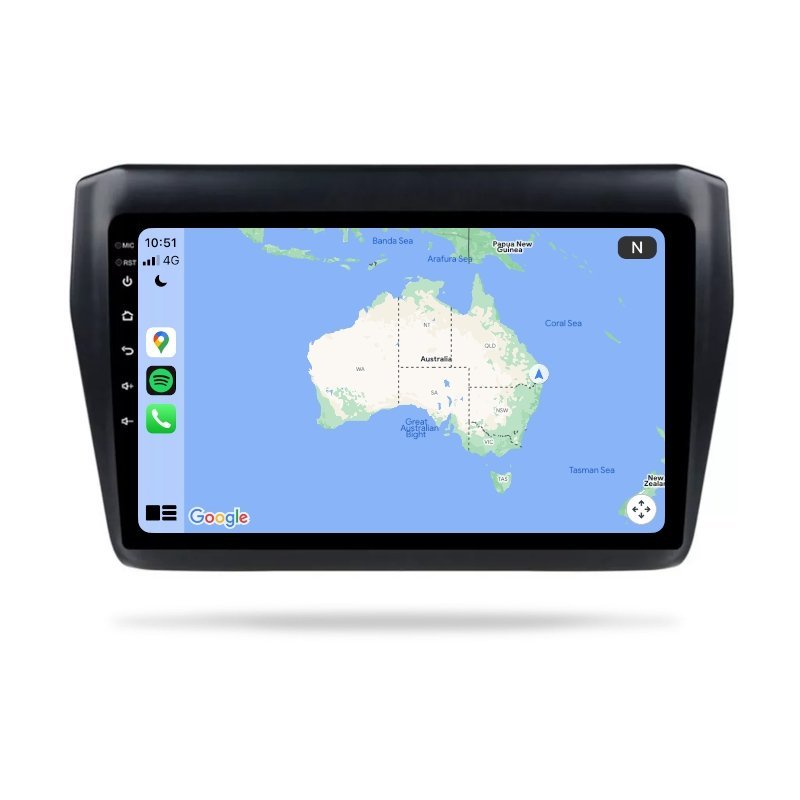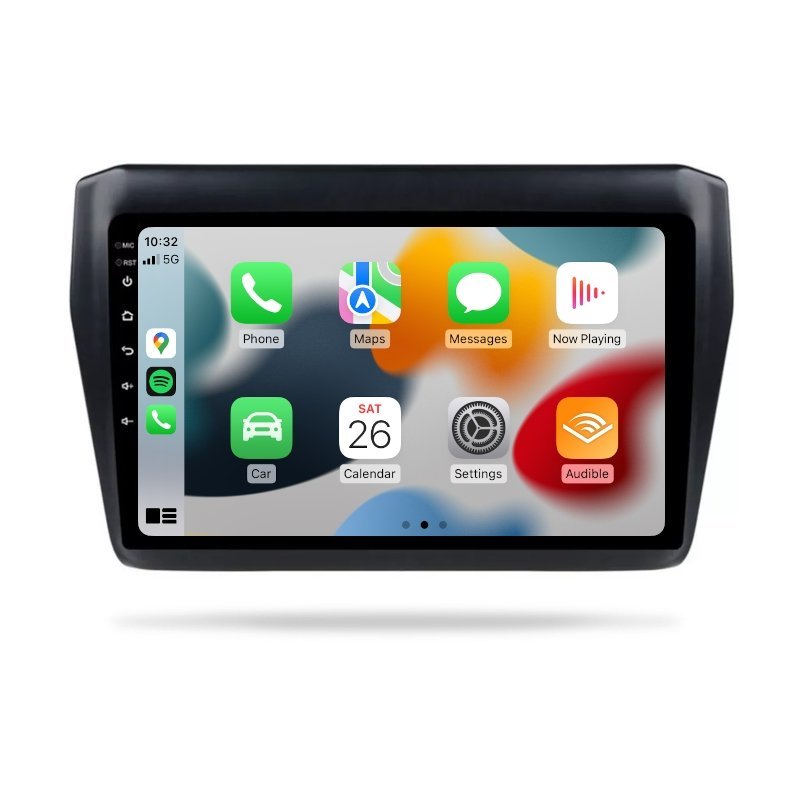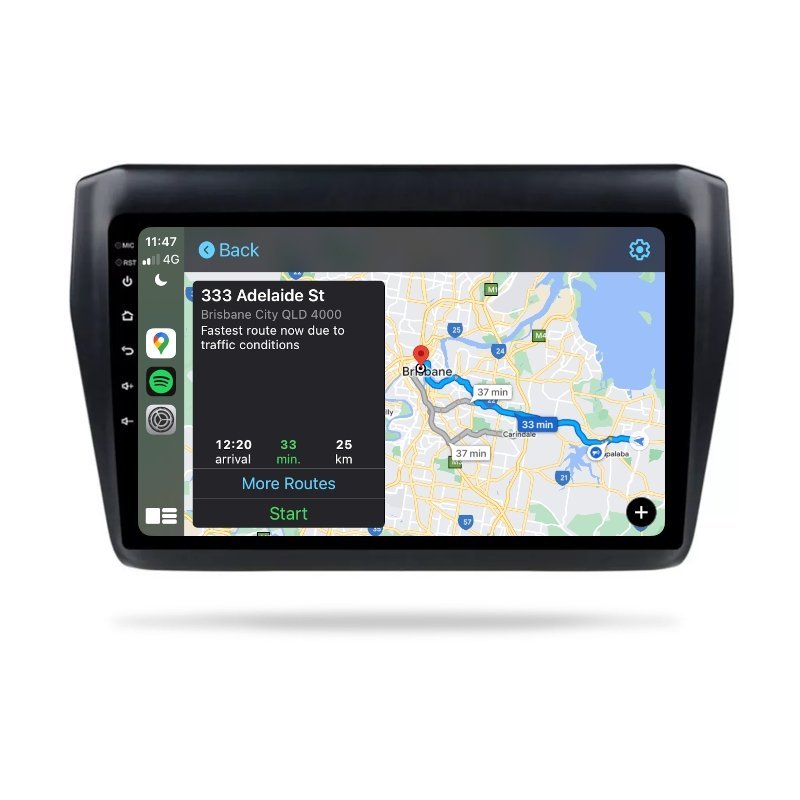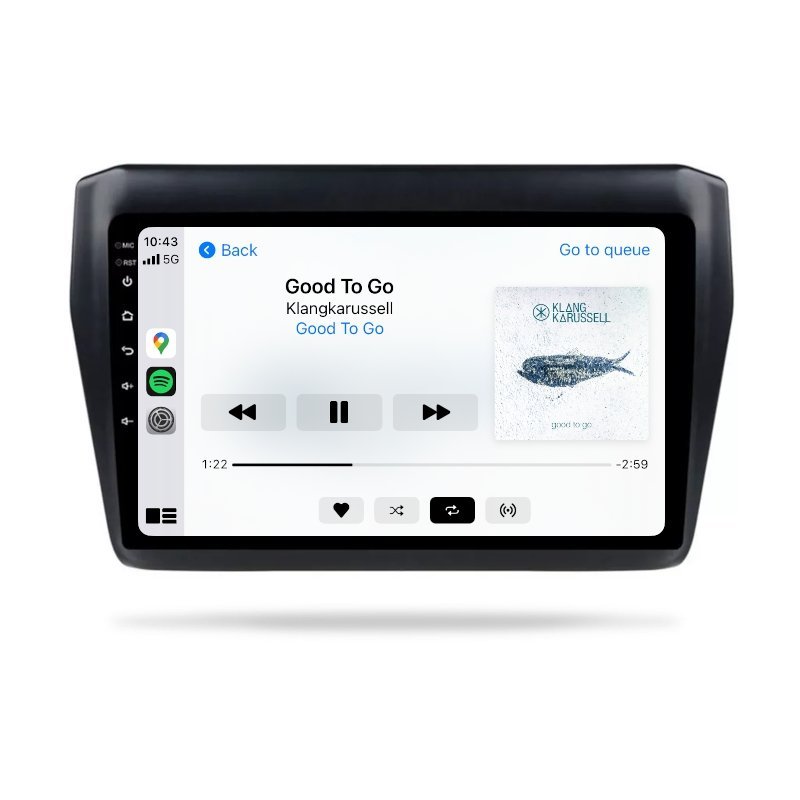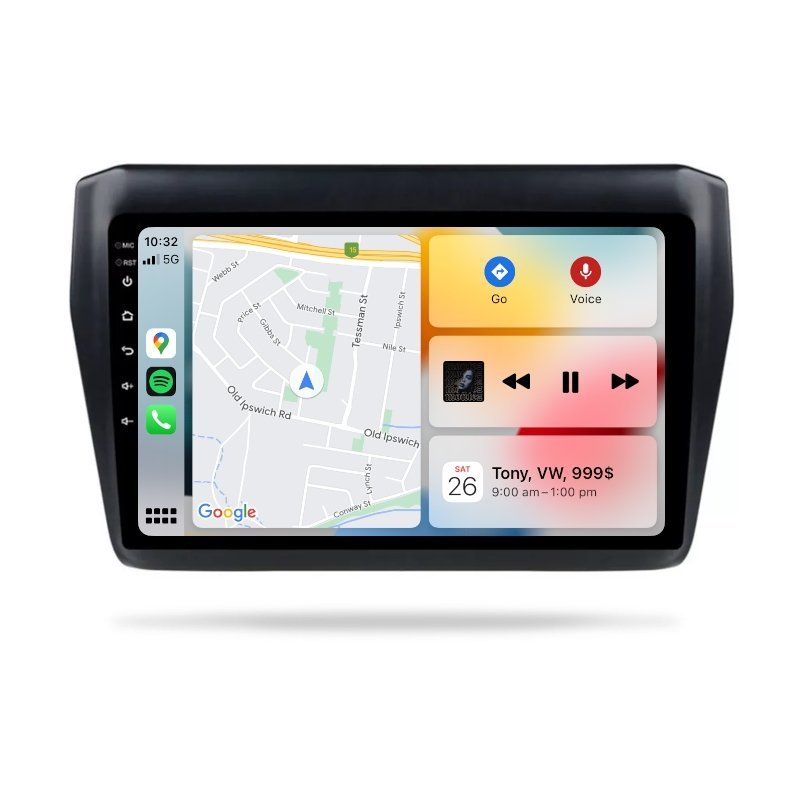Frequently Asked Questions
Everything you need to know about this head unit
Connect the single RCA cable with the yellow plug (included in your package) to extend your Bluetooth signal. This cable doubles as both a camera input AND a Bluetooth/WiFi antenna extension. The two small blue wires attached are antenna boosters that significantly improve connection stability. This simple connection takes 30 seconds and resolves 90% of Bluetooth issues. Make sure it's firmly connected even if you're not using a rear camera.
Try these proven solutions:
1. Quick Fix: Settings → Apps → Z-Link → Disable → Enable → Open (repeat each use)
2. Check Cables: Use the data/charge USB cable (not charge-only)
3. Bluetooth Setting: Disconnect all other Bluetooth connections - CarPlay needs exclusive access
4. Factory Reset Z-Link: Find the pink 'RESET' app, restart, reconnect Bluetooth, then try Z-Link
5. Sound Issues: Switch audio source to 'AUX' or 'USB/AUX' in your vehicle menu
Most issues are resolved with step 1 or 3!
The processor differs between models: The 2/32GB has a 4-Core processor, while 4/64GB and 8/128GB models feature the powerful 8-Core Cortex-A55 processor. Combined with RAM differences: The 2/32GB model with its 4-Core processor and limited RAM may experience slowdowns with heavy multitasking. The 4/64GB with 8-Core provides smooth performance for most users - no lag, seamless app switching, and enough storage for maps and music. The 8/128GB with 8-Core offers maximum performance with its generous RAM allowing unlimited multitasking and massive storage for extensive media libraries. Think of RAM like your desk space - more RAM means you can have more apps open simultaneously without slowing down.
Absolutely normal! These head units are complete replacement systems with their own GPS antenna, microphone, and Bluetooth module. Your factory connectors for these features won't be needed anymore. The important connections are: main power harness, speaker outputs, and the yellow RCA cable (even if not using a camera - it extends Bluetooth range). Any leftover factory plugs can be safely tucked away. If you're unsure about any connection, our support team is here 7 days a week.
Z-Link updates are handled through system firmware updates. Go to Settings → System → System Update. If an update is available, download it to a USB drive (FAT32 format) and install. Important: Never download Z-Link APKs from unofficial sources - they won't work and may cause issues. If you're having compatibility issues with newer iOS versions, the disable/enable workaround (Settings → Apps → Z-Link) usually resolves them while waiting for official updates.
Consider your usage:
• 2/32GB (4-Core): Budget option - fine for basic use, but may lag with multiple apps due to 4-Core processor and limited RAM
• 4/64GB (8-Core): Sweet spot - smooth Android Auto/CarPlay, multitasking, and ample storage
• 8/128GB (8-Core): Premium choice - unlimited multitasking, massive storage, future-proof for years
Most customers choose 4/64GB for the perfect balance of performance and value. The extra RAM makes a huge difference in daily smoothness!
The yellow RCA cable's blue antenna wires also boost WiFi signal! Make sure this cable is connected. Additionally, try these tips: Position the blue antenna wires away from metal surfaces, check that your phone's hotspot is set to 2.4GHz (not 5GHz) for better range, and ensure the head unit's WiFi sleep policy is set to 'Never' in Settings → WiFi → Advanced. For best performance with wireless CarPlay, keep your phone within 1-2 meters of the head unit.
Go to Settings → Sound → Equalizer and adjust to your preference. For more volume, increase the 'Loudness' setting. The 4/64GB and 8/128GB models have superior audio chips that provide cleaner, louder sound. If you have an amplifier, use the RCA outputs for best quality. Also check Settings → Factory Settings (password usually 126) → Audio settings for additional gain controls. Remember: higher-spec models (4GB+) include premium audio components for noticeably better sound.
Yes! Most vehicles work instantly. If not, use the steering wheel learning app: tap the steering wheel icon, press each button on your wheel, and assign functions. For newer vehicles with CANbus, we provide CANbus modules for automatic setup. Some vehicles may need the Key1/Key2 wires connected (usually included in our harness). If you're having trouble, let us know your exact vehicle model and we'll provide specific instructions.
We offer a 30-day return policy. If it doesn't fit or there's a compatibility issue, we'll work with you to resolve it. If you change your mind, a 20% restocking fee applies. Our team verifies compatibility before shipping to minimize issues. We provide installation support 7 days a week to help resolve any problems. With our 3-year warranty and Australian-based support, you can purchase with confidence. Full details in our Refund Policy.
Historical Context and Evolution of the Suzuki Swift:
First Generation (1983–1989):
The Swift story began in 1983, with the Suzuki Cultus debuting initially in the Japanese market. Quickly gaining popularity, this nimble and fuel-efficient hatchback expanded worldwide under diverse brands—including Chevrolet Sprint in North America and Holden Barina in Australia—attracting admiration for efficient minimalism, affordability, and reliability.
Second Generation (1989–2003):
Suzuki refined its formula significantly, delivering another generation identified as Cultus domestically and Swift globally. This thoroughly evolved generation featured improved quality, comfort enhancements, and a wider engine selection—from highly efficient, modest engines, up to energetic performance-oriented versions. With spirited driving characteristics, impressive affordability and durability, this compact car secured loyal consumers who admired its carefree ownership and engaging handling.
Third Generation (2004–2010):
The Swift fully embraced a newfound maturity and sophistication by debuting a thoroughly redesigned modern, European-inspired shape, renowned globally for agile driver-focused handling, quality build, and refinement remarkable for this segment. Swift Sport performance variants, launched during this period, attracted attention for their charismatic four-cylinder engines, sharp dynamics, satisfying gearboxes, and youthful aesthetics, rapidly transforming the Swift nameplate into a genuinely desired hatchback brand.
Fourth Generation (2010–2017):
Following global acclaim, Suzuki further polished Swift’s style by introducing subtle yet effective changes for improved space, comfort, and safety, without compromising celebrated drivability. Solidly engineered and universally appealing to drivers seeking economical yet dynamically appealing transportation, it perfected its predecessor’s winning formula. Moreover, Swift Sport versions continued gaining recognition for precision, responsiveness, and reliable performance that lower-budget enthusiast owners deeply cherished.
Fifth Generation (2017–2022):
Released in 2017, the fifth-generation Swift embraced an evolutionary design demonstrating more aerodynamic contours, a lighter yet rigid new HEARTECT platform, upgraded safety features, and significantly enhanced cabin amenities. Available as a three- or five-door hatchback depending on global market variations, the latest Swift featured engine choices including fuel-efficient mild hybrid powertrains and the continuously admired turbocharged Swift Sport offering energetic yet accessible performance.
International Variations and Appeal:
Globally, the Suzuki Swift sustained remarkable flexibility and market adaptation, identified as Maruti Suzuki Swift in India—a critical market where outstanding sales growth and positive reception cemented its dominant role. Known for their efficiency, affordability, and robustness, Maruti-built Swifts became a definitive standard for practical yet enjoyable motoring. In Europe, Australia, and other Asian markets, drivers valued its maneuverability, fuel economy, confident handling dynamics, and reliability that confidently earned customer acclaim repeatedly.
A Natural Technological Progression:
Considering the Swift’s carefully refined evolution and strengthened appeal over successive generations and subtle market variations, modern driver expectations for contemporary technology integrations, especially in-car infotainment, increased substantially. Recognizing the essential need to integrate latest-generation smartphone functionality into trusted vehicles like the Suzuki Swift, various quality aftermarket solutions emerged—such as those thoughtfully developed by Brummstadt.
Brummstadt has thoughtfully designed a compatible head unit solution precisely tailored to fifth-generation Suzuki Swift models (2017–2022). Carefully engineered to harmoniously blend with the original dashboard aesthetics and dimensions, this advanced head unit features integrated wired and wireless support for Apple CarPlay and Android Auto, allowing drivers access to intuitive smartphone interfaces and well-regarded navigation apps like Google Maps, Apple Maps, and WAZE.
Illustrative scenarios showcase this technology’s meaningful impact: Envision a relaxed dinner gathering with family, after which the group casually decides to continue the evening at a friend's house nearby. Utilizing simple phone-based navigation setup, the destination smoothly transitions to the CarPlay or Android Auto display upon vehicle startup, issuing audible and visual turn-by-turn directions without distraction or frustration. Such real-world functionality transforms daily driving scenarios into effortless, intuitive experiences.
Moreover, Brummstadt’s system accommodates remarkable optional extras, including front and rear-mounted 1080p HD cameras offering continuous recording functionalities. These camera upgrades meaningfully improve visibility and situational awareness, while recorded video facilitates reassurance and protection during uncertain or unexpected driving conditions.
Further intriguing features elegantly enable passengers to connect gaming controllers via USB ports directly into the infotainment unit, thereby hosting gaming entertainment directly from vehicle screens, thus ensuring memorable road trips that extend beyond routine transportation tasks.
Equally impressive, advanced voice control capabilities secured through smartphone voice-assistants easily manage media preferences, navigation instructions, and even remote interactions with connected smart home systems. Picture returning home after long travels, conveniently commanding home automation (“Hey Siri, turn on exterior pathway lights!”)—the head unit perfectly illustrates the seamless blending of automotive connectivity and everyday life practicality.
Benefits and Advantages of Suzuki Swift (2017–2022) with Modern Infotainment Integration:
The Suzuki Swift’s primary strengths of superior fuel efficiency, compact agility, reliable build quality, and engaging driving experience remain centrally attractive. Yet, carefully engineered, modern infotainment integrations like those offered by Brummstadt significantly extend the Swift’s practicality and driving enjoyment. Employing an intuitive smartphone-connected interface simplifies urban journeys, decreases stress during longer trips, and seamlessly infuses travel occasions with personalized entertainment choices and safety awareness technologies. Such well-integrated improvements mean not merely increased driving convenience, but altogether more comfortable, informed, and secure travel conditions.
Ultimately, Suzuki’s meticulously developed Swift generations, underscored by technological progression, have shaped a confident legacy defined by versatile design, stable practicality, and delightful driving enjoyment. Embracing contemporary infotainment enhancements further strengthens this well-established formula—ensuring the compact Swift hatchback truly remains a beloved, practical, and personally insightful companion in everyday motoring.



